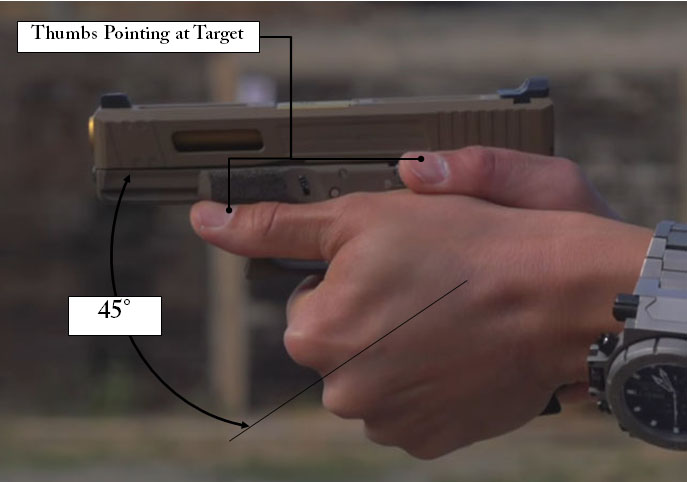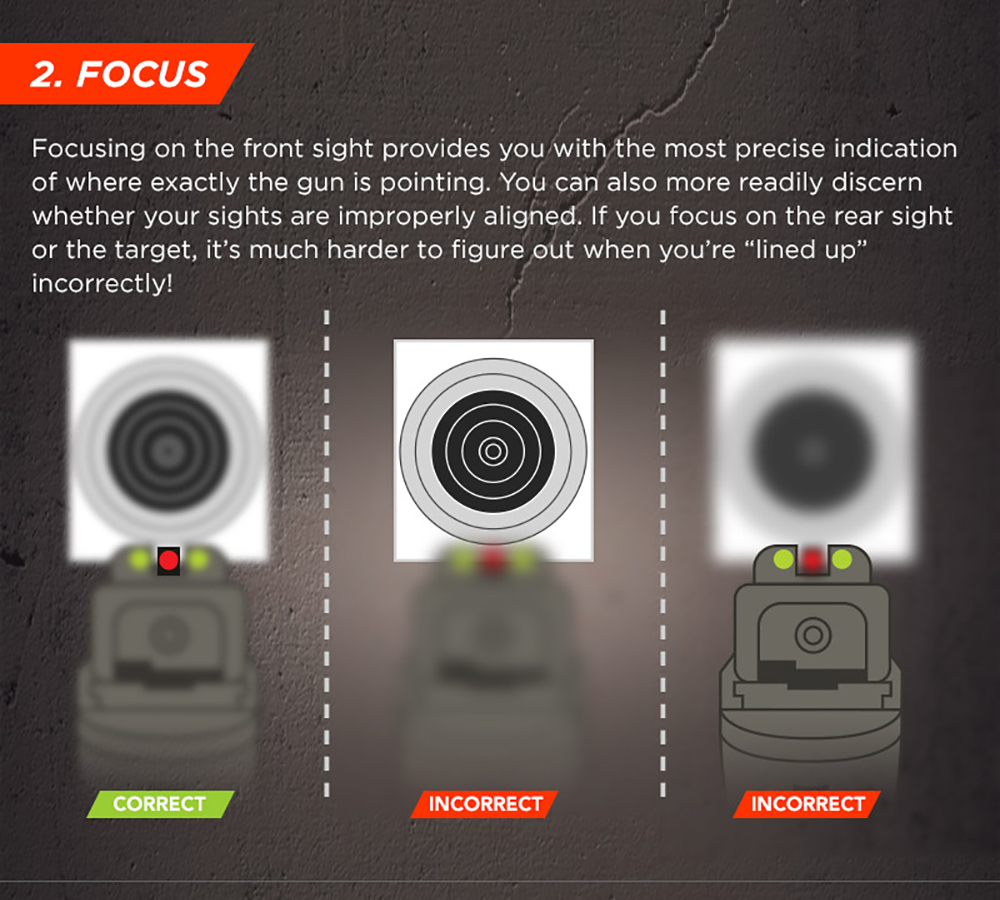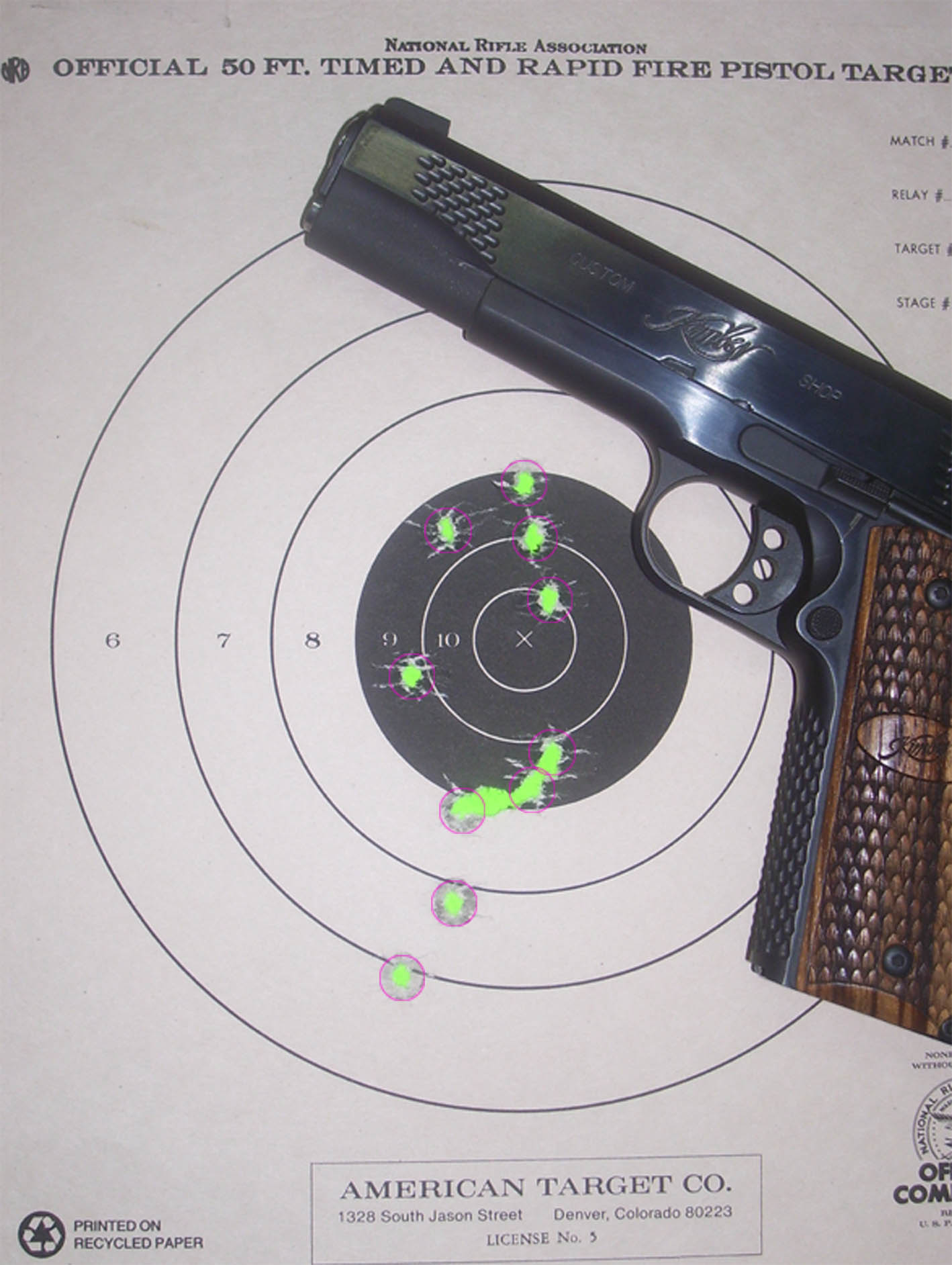How to Shoot a Pistol Better?
by Robert
Posted on 27-10-2020 04:58 AM

By ernest langdon
the traditional double action pistol, long feared by the competitive shooter, is quickly becoming a force to be reckoned with in some types of competitive pistol shooting. With the growing popularity of idpa and production class in ipsc, the double action pistol is becoming a popular option for competitive shooters around the globe.

Sue coletta is a crime author and writer bud of mine with a new book out this november worth your time, marred. I’m interested in how coletta approaches the weapons in her work, seeing as how she came up with a primer called 60 ways to murder your fictional characters. What follows is her guest post on how she chose the firearms for one of her law enforcement characters, along with a terrific example of how to load and shoot a semi-automatic pistol. Enjoy!.
One thing i’ll point out is that handguns seemed to be fired using one hand back in these days. In fact, fairbairn’s book is called “shooting to live with the one hand gun“. The bureau of alcohol, tobacco and firearms (batf) still defines a handgun to this day as a gun designed to be fired with one hand. For example, the atf pistol definition says “ the term “pistol†means a weapon originally designed, made, and intended to fire a projectile (bullet) from one or more barrels when held in one hand“.
It is my firm opinion that the pistol you are trying to shoot must fit your hand properly or you'll never be able to shoot it well. This is more important with a tiny pistol like the lcp than it is with larger pistols. The following is something that i've published a few times and i think it applies here.
Little Guns Can Do Big Things
Depending on where you live, you may be restricted to using shotguns for the upcoming big-game seasonsand this means that shooting "slugs" through your shotgun is the way to go.
 Shooting slugs is easy, but accuracy is not guaranteed. The secret to accuracy is finding the right gun and slug combination, preparation and then practice--a lot of practice. You may do well with a standard shotgun if you use appropriate ammunition and invest in plenty of range time. There are also shotguns available with fully rifled barrels and/or hardy scopes designed for slug guns, although this is a more expensive route.
Shooting slugs is easy, but accuracy is not guaranteed. The secret to accuracy is finding the right gun and slug combination, preparation and then practice--a lot of practice. You may do well with a standard shotgun if you use appropriate ammunition and invest in plenty of range time. There are also shotguns available with fully rifled barrels and/or hardy scopes designed for slug guns, although this is a more expensive route.
How to Shoot a Handgun | The Most Accurate Way of Shooting
By andy rutledge | oct 25, 2017 | blog | 80 comments
when any of us first starts shooting we make a point to close our off eye so that we can have a clear sight picture. That clear, unambiguous sight picture is vital at this stage because we typically have no trained mechanics or muscle memory to assist with our effort to shoot accurately. What’s more, most of us are unaccustomed to unconsciously or even consciously directing our focus into one eye while the other eye remains open.

5) A Good Trigger
Components that make up the ruger air hawk
when you cock the rifle, the pictured spring compresses and brings the piston (5″ cylindrical tube above the spring) with it towards the rear of the gun. When you squeeze the trigger, this whole mass of metal is released and goes lurching forward until slams into the breach of the gun… all before the pellet even leaves the barrel. It is this internal movement of parts & collisions during the shot cycle that so often throws the gun off target before the pellet is air born. The good news is that all this internal chaos can be partially tamed with what is called “follow through. †to follow through effectively, it becomes very important to hold the gun on target… even after you believe it has fired. By simply practicing the technique of keeping your sights on target long enough for the pellet to actually leave the gun, you will dramatically increase accuracy.

This basically starts even before you make the draw. Having a comfortable and good solid holster is suggested. The actual draw then begins with a good solid three finger grip on the weapon. Pull then pivot weapon parallel to the ground. Once the line of sight is in the target, pull the trigger.
GLOCK SHOOTING TIPS & TECHNIQUES
This section aims to provide a general overview of the techniques used in shooting and to give some tips that might help in the sport. Whatever type of shooting it is consistency that is the aim of the target shooter; to repeat a shot again and again in precisely the right way.
Rifle Shooting Tips Every Shooter Must Know
The tips above have been tested and recognized by many knowledgeable air rifle users. If you have any good tips and tricks in airgun shooting, do not hesitate to put them into practice and discuss here. Keep calm and aim well! read more about why airguns become so popular.
Tuning is a catch-all term and can mean anything from fitting a set of £20 custom guides to having the gun entirely re-engineered at a cost of hundreds of pounds. While not always strictly necessary, improving the shooting characteristics of your rifle is something many springer shooters enjoy as much as actually shooting their guns.
Be Sure of Your Target and What's Beyond It
Of the seven fundamentals of marksmanship, sight alignment, sight picture and trigger control are most critical to handgun accuracy. Sight alignment is the relationship between the handgun's front and rear sight. Sight picture is simply a matter of superimposing the aligned sights onto the intended target. Trigger control refers to the depression of the trigger to the rear until the shot breaks.
Developing a smooth trigger pull will keep you on target. Photo: nick jacobellis. As a retired law enforcement officer, i can vouch for three fundamental training drills that will improve your firearms proficiency—dry firing, the ball-and-dummy technique, and the ready up drill. Let's review these three in more detail. The purpose of dry firing is to help you develop the proper sight alignment and trigger control without burning up a supply of expensive training ammunition. Dry firing an unloaded firearm can be practiced for hours and will help you develop the most basic fundamental skills that will help you to become a proficient firearms operator.
But the spf’s latest training advancement, which it showcased on wednesday (oct 21), seeks to change all that. The enhanced live firing range system (elfras) uses sensors, cameras and data analytics to automatically detect, assess and correct a trainee’s weapon handling, breathing, gaze and posture. The system also shows where the round hits the target board and automates the scoring.
You may want to consider changing to single vision lenses, lined bifocals or trifocals for your shooting glasses. Many shooters find that single vision lenses with an intermediate prescription that makes focusing on the front sight easier works well. The rear sight, and the target will be somewhat blurry with the front sight in focus. This is normal, and what you want. Sadly there is no way to keep all three in focus with iron sights.
1-2-r-3 9-jun-10 1-reload-2 9-feb-08 10 round assault course 17-feb-14 10-8 pistol test 30-jun-13 26662 drill 20-feb-10 3-two-1 24-mar-10 3by3 31-aug-12 3×5 card drill 8-sep-07 4567 drill 3-oct-11 4×20 transition drill 20-dec-09 5×5 skill test 5-jan-15 99 drill 6-jan-11 acceleration 30-aug-08 ball & dummy drill 29-mar-08 bill drill 17-nov-07 bill drill 2 8-mar-14 bullseye 1000 22-sep-10 catch-22 20-dec-09 changing gears 17-nov-07 circle drill 19-sep-07 dot torture 8-sep-07 el presidente 19-sep-07 extend prep and press/alternating target area 24-feb-14.
First, you’ll notice some high-fallutin’ accouterments like professional aperture sights. The front is a hooded aperture, just like those used on olympic air rifles. In english, instead of a simple post for the front sight, you’ll see a hollow circle which surrounds the bullseye of the target. When using the official nra 5 meter bb gun target at 5 meters, that front ring appears a little larger than the black bullseye, so you center the aim point in your view. The rear sight has large dials to adjust the point of impact for windage and elevation – that’s side to side and up and down.
Steel challenge course often require a lot of twisting and shooting at wide angles. Your body has a natural point of aim, and you shoot your best at targets in that direction. For each course, decide what shot is the most critical (the 4th plate on 5 to go, for example, or the option plate on speed option) and.
Your Support Hand Should Be As High And Back On The Gun As Possible
Weaver stance the first two-hand stance to see widespread use, the weaver stance was developed by los angeles county deputy sheriff jack weaver for combat-style matches. The weaver is an aggressive, “boxer-type†stance. Assume it by bringing the support-side (non-shooting side) foot forward 8 to 10 inches with the toes pointing toward the target, with the strong-side (shooting side) toes canted 45 degrees outward. The gun is presented to the target in a two-hand hold, with the strong-side arm not fully extended. That elbow should be unlocked and angled slightly outward. The support arm has the elbow bent downward at a 45-degree angle. The support hand pulls into the shooter while the strong hand pushes outward and the support-side shoulder leans into the gun. This creates a very rigid grip on the gun.
Tip 1: Have A Good Shooting Stance
Elvira very good article comparing the three stances. I was taught by ray chapman at his practical shooting school in the 80's and adopted the modifies weaver stance from that time until today. I too demonstrate all three stances to my students, teaching the pros,and cons of each. Then, i allow my students to choose the one most natural to them. Thank you for your articles and instruction. My students have pew pew listed as one of their online resources.
Shooting Techniques: The Art of One Hand Shooting
Firing techniques include the use of hand-and-eye coordination, flash sight picture, quick-fire point shooting, and quick-fire sighting. Hand-and-eye coordination is not a natural, instinctive ability for all soldiers. It is usually a learned skill obtained by practicing the use of a
shooting one handed is one of those skills that most shooters, myself included, don’t really work on as much as we should. We know from looking at what’s happened in past gunfights that getting a solid two-handed grip on the gun gives us a much better chance of success, but sometimes that’s not possible. One hand might be occupied holding a flashlight or the hand of a child, or we might get injured on one side, but we still need to shoot. Practicing one handed is not always fun because it’s a lot harder than how we normally shoot, but it’s an important skill to learn.
Search
Categories
- Stock Trader
- Criminologist
- Coworker Leaving
- Mortician
- Virologist
- Veterinary Technician
- Title Examiner
- Team Leader
- Technical Recruiter
- Senator
- Scribe
- Perioperative Nurse
- pediatrician
- Modeller
- Military
- Economist
- Coworker
- Captain
- Arborist
- Voter
- 14
- 12
- Worker
- Chemistry
- Actuary
- Actor
- Announcer
- Wellness Nurse
- Judge
- Academic Dean
- Administrator
- Agricultural
- Administrative Assistant
- Agronomist
- Barber
- Analyst
- Pharmacist
- Call Center Support
- Cameraman
- Interventional Radiologist
- Wedding Officiant
- Politics
- Public Health
- Respiratory Therapist
- Singer
- Sniper
- Teacher
- Manatee
- Hacker
- Gambling
- Flight Attendant
- Entertainer
- Employee
- Daily Nutritionist
- Kitchen Manager
- Astronomer
- American Upholsterer
- Activist
- Accountant
- Writer
- Vice President
- Inventor
- Drafter
- Debater
- Carpenter
- Baker
- Attorney
- Astronaut
- Advisor
- Occupational Therapist
- Nutritionist Fact
- Municipal Arborist
- Management
- Mail Carrier
- Livestock Farmer
- Landscape Contractor
- Land Surveyor
- Insurance Investigator
- Insurance Broker
- Inspector
- Hunter
- Historian
- Hiker
- Hairstylist Black
- Hairstylist
- Gunsmith
- Gun Shooter
- Grant Writer
- Government Auditor
- Gold Panning
- Gardener
- Forensic
- Fisherman
- Fireman
- Firefighter
- Esthetician
- Entrepreneur
- Engineer
- EMT
- Electrician
- Driller
- Doctor
- Diver
- Dispatcher
- Dishwasher
- Director
- Dietitian
- Detective
- Dancer
- Creative Writing
- Counselor
- Cloud Architect
- Climber
- Chef
- Chairman
- Cardiac Sonographer
- Boss
- Bookkeeper
- Bee Keeper
- Bartender
- Auctioneer
- Architect
- Appraiser
- Watchmaker
- Wanker
- Typist
- Trooper
- Train Controller
- Tool and Die Maker
- Therapist
- Technician
- Surgeon
- Supervisor
- Stripper
- Soldier
- Sociologist
- Social Worker
- Sheriff
- Sexy Pick Up Lines
- Self Reminder
- Secretary
- Scientist
- Scheduler
- Sailor
- Roofer
- Marshal
- Manager
- Librarian
- Lawyer
- Landscaper
- Investigator
- Retirement
- Registered Nurse
- Recruiter
- Records Clerk
- Realtor
- Rancher
- Quilter
- Psychology
- Psychologist
- Principal
- Priest
- Postmaster
- Office Assistant
- Nutritionist
- Nurse
- Network Administrator
- Mechanic
- Mayor
- Podiatrist
- Plumber
- Planner
- Pipe Fitter
- Pilot
- Photographer
- Phlebotomy Technician
- Painter
- Nurse Practitioner
- Identifier
- Lacemaker
- HRD
- Hatter
- Host
- Herdsman
- Bouldering
- Assassin
- Bomberman
- Army
- Attendant
- Blogger
- Clergyman
- Cashier
- Botanist
- Bodyguard
- Aquascaping
- Assistant
- Electorate
- Physician
- Arbitrator
- Administrative